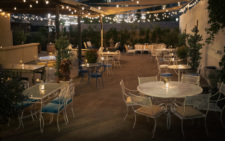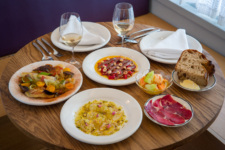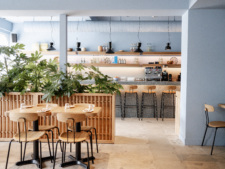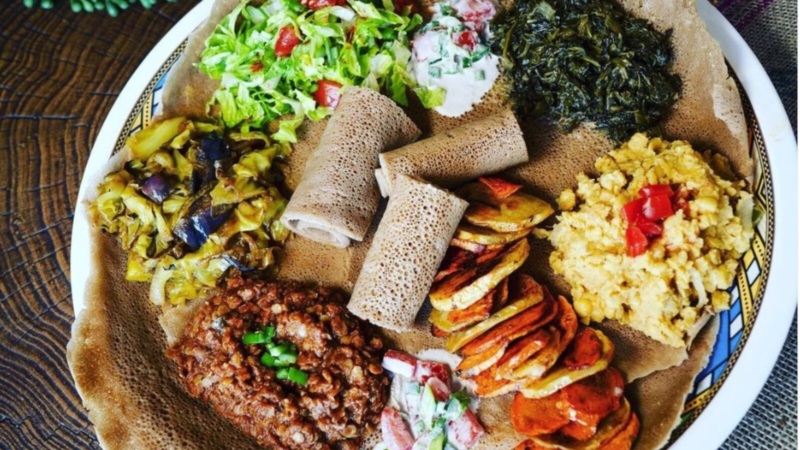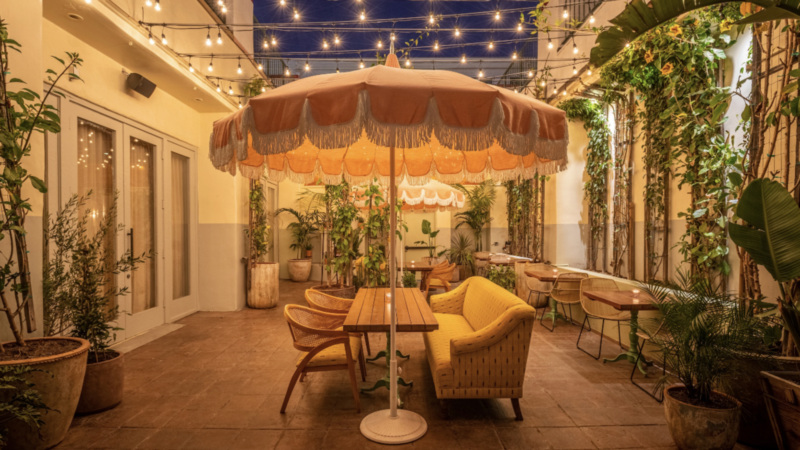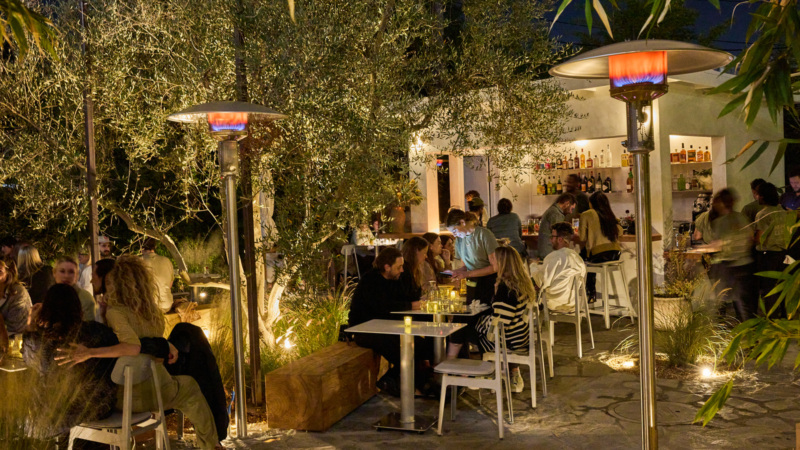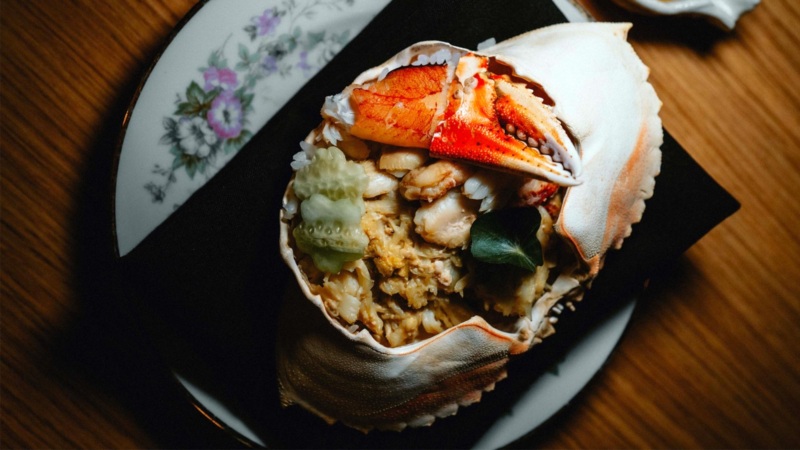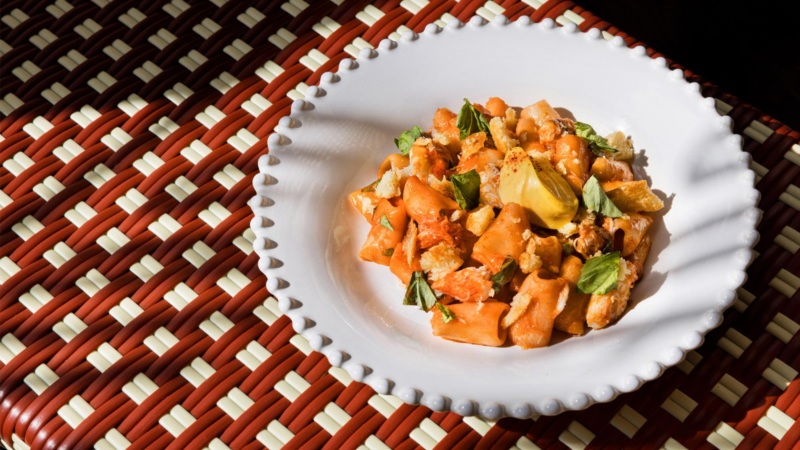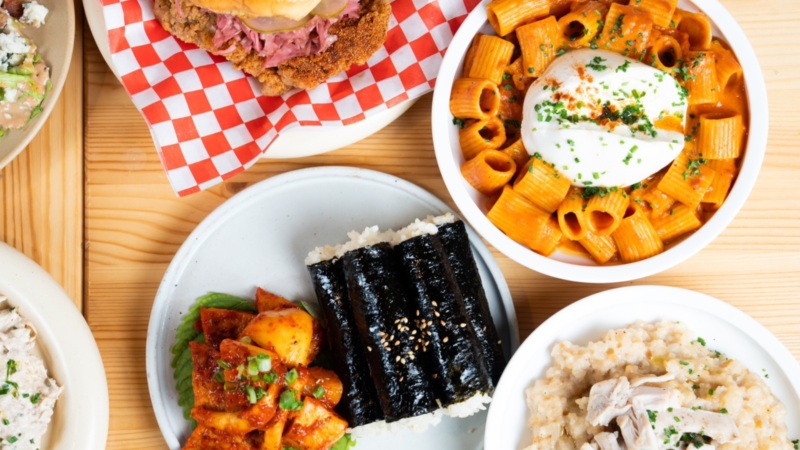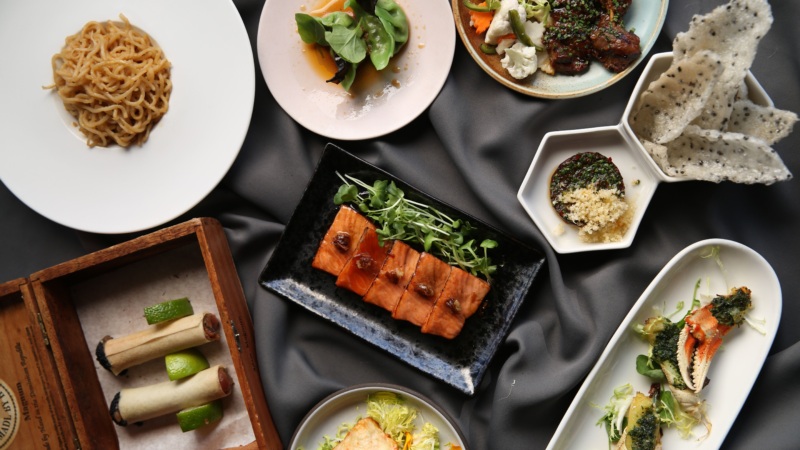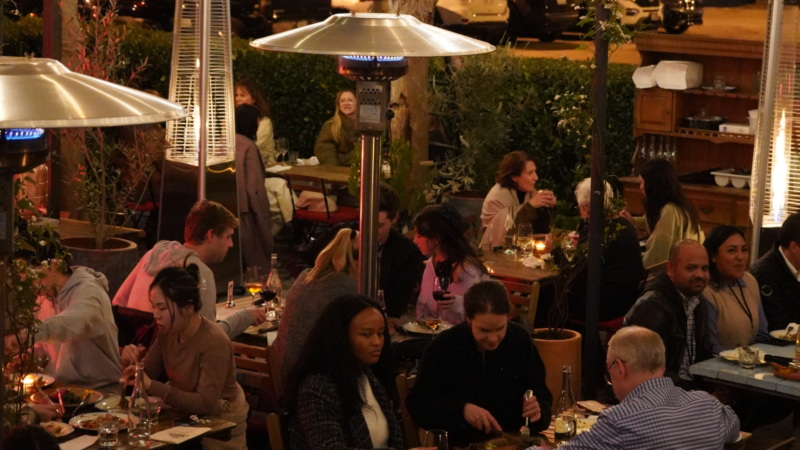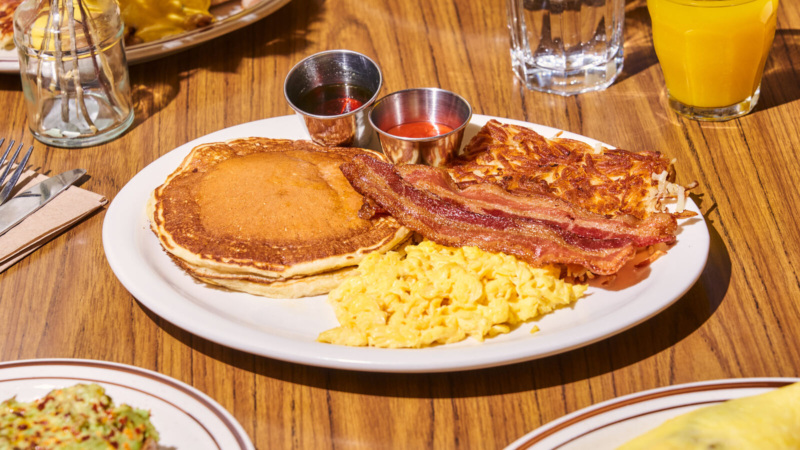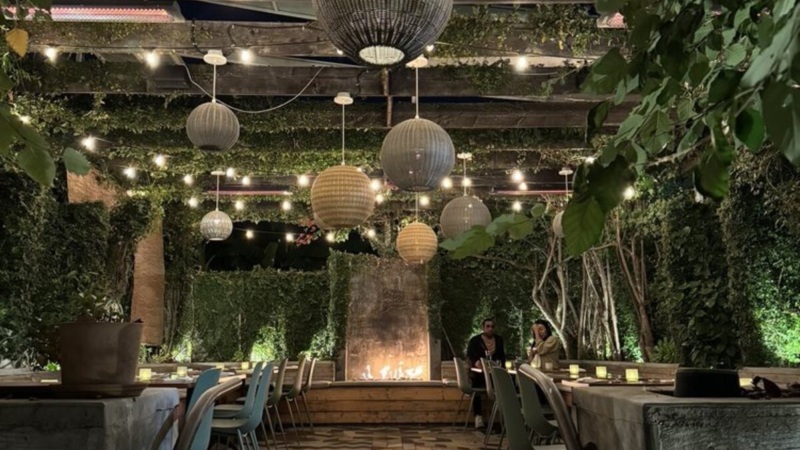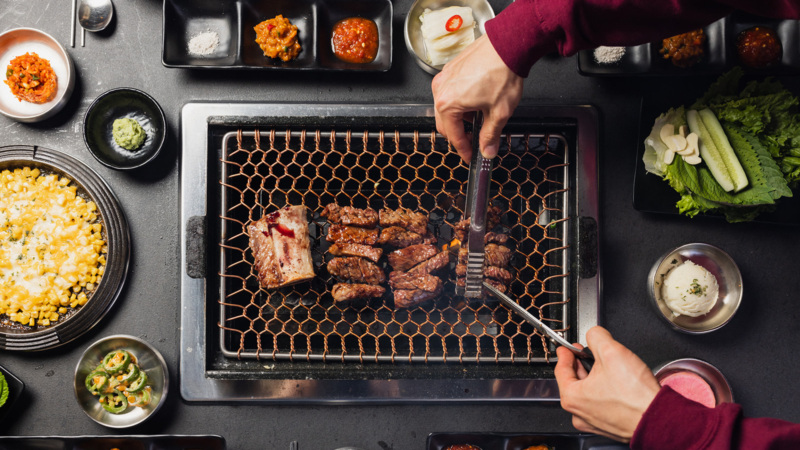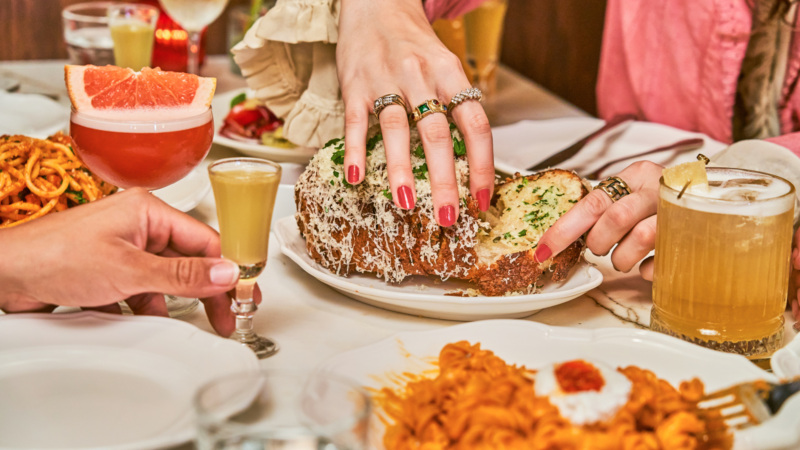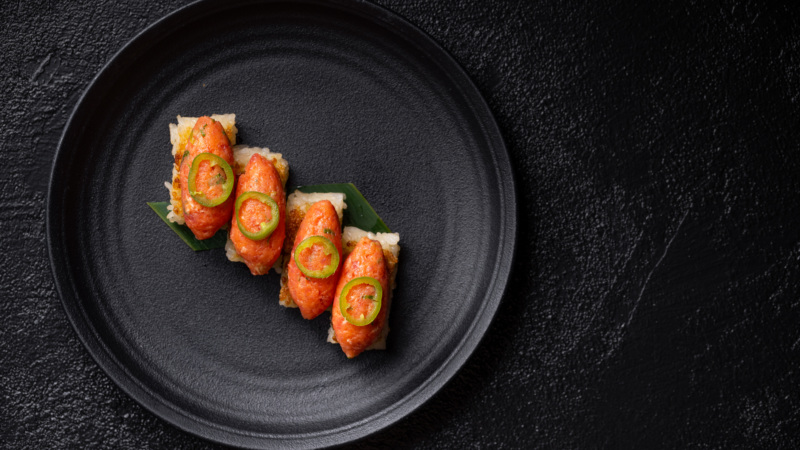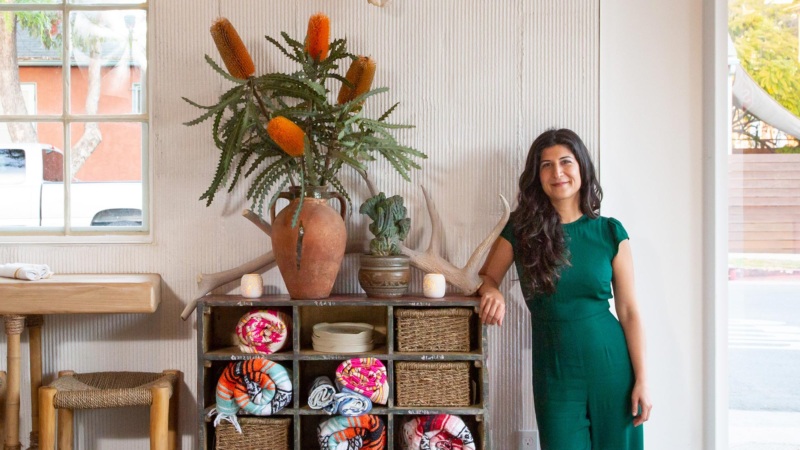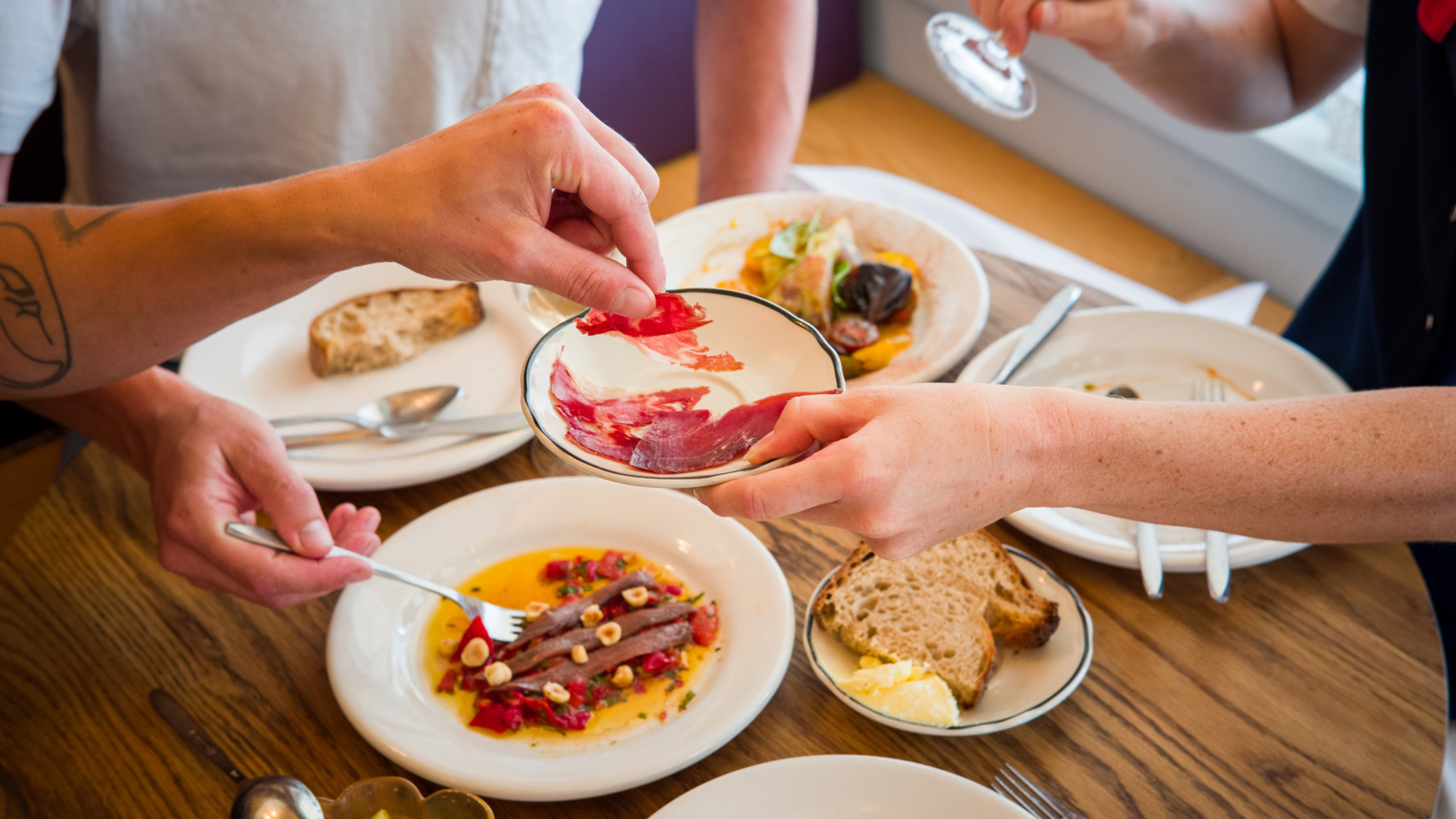
How Do We Describe the Way Angelenos Like to Dine Now?
The coolest restaurants in Los Angeles right now are intrinsically casual. They have tight menus designed for a variety of appetites. They tend to emphasize drinks, either wine or another specific option, like sake or mezcal. They are low-key, flexible, and brilliantly engineered for how we like to live in this town.
I’m talking about Stir Crazy, the perfect pitstop for an easygoing hang, tailored for diners to order as little or as much as they desire over the course of however long they want to stay. And about the convivial, sherry-glasses-clinking vibe at Barras Santos, which is equally suited to drinks and snacks as it is to full-on dinner. Also the choose-your-own adventure mentality of Budonoki, a new Silver Lake izakaya whose focus is on “cold beer, cocktails, sake, sushi, and snacks.”
There is no denying that flakiness is an inherent trait of L.A.’s social culture. There is traffic. We are homebodies. Thus, the rise in purposefully noncommittal restaurants is an opportune phenomenon. I am not, to be clear, simply describing the long-standing wine bar trend. The ethos is an effortless, European way of eating and drinking, yes. But the moment is inclusive of a diverse array of cuisines, not to mention drinking formats that deviate from a customarily designed wine list that begins with bubbles then moves into white, rosé, and red.
Le Champ is a recent Arts District entry with cheese and charcuterie, daily specials, and an expansive patio to linger on. ATLA, a New York City import from the chef Enrique Olvera, is another, with its expert agave-based cocktails and breezy, all-day menu in Venice. This model works well here, but it’s also happening elsewhere. Birdie’s in Austin, Libertine in New York City, and Pompette in Chicago are a few examples of trendy spots that are at once streamlined and malleable.
The guest experience evolves over the course of a shift, which is the magic of us being dynamic to what the guest wants.— Mackenzie Hoffman, Stir Crazy
Chalk it up to inflation or rising food costs, perhaps, but it is obvious that diners want to use restaurants more like spaces to sip, snack, and socialize, and less like dinner destinations right now. Mackenzie Hoffman, an owner of Stir Crazy, describes how this plays out in her 750-square-foot space on Melrose Ave: “The guest experience evolves over the course of a shift, which is the magic of us being dynamic to what the guest wants and of the guest trusting us to go on our ride and see what energy is in the air on a given night.”

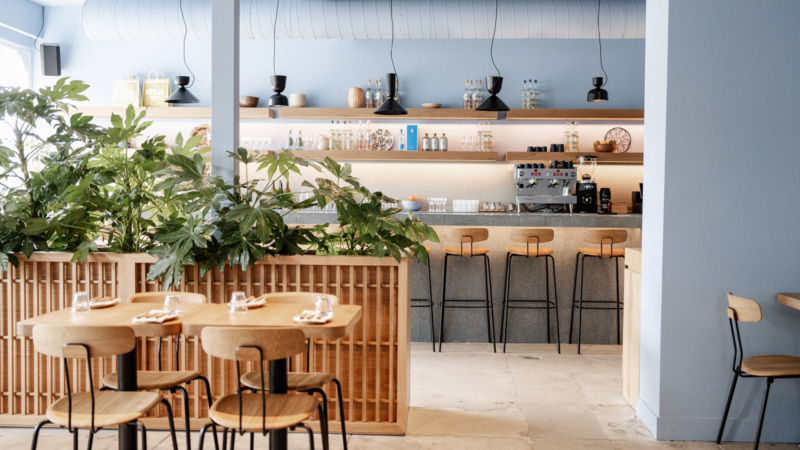
As for what to call Stir Crazy and other similar restaurants, the jury is still out.
“Wine restaurant? Small restaurant? Over-performing sandwich shop? I’m not quite sure,” muses Hoffman. My editor and I have had many circular conversations about how to refer to this style of dining. “In the spirit of aperitivo with an L.A. twist,” she suggested over email. I proposed the term “loose dining,” but it didn’t quite stick. “Informal dining?” “Nouveau bar food?” she riffed.
How about the phrase “choose your own adventure?” It’s one that both Matt Bronfeld, the co-owner of Le Champ, and Harley Wertheimer of Stir Crazy have used to explain the diner experience at their restaurants. I think it may well be the best descriptor that exists. “It might be corny, but I always tell people it’s like a choose your own adventure,” Bronfeld says. “We have entrées, but we also have a lot of small dishes. You could come here and drink and not eat. You could come here and eat and not drink.”
However we want to talk about it (if you have other ideas, I’m all ears), I don’t think “choose your own adventure” is just a fad. It signals something bigger at play, which is that in a time when it’s harder than ever to open a restaurant — not to mention keep a restaurant open — operators and chefs are looking to us for input, and adapting based on our wants and needs. Long-term sustainability requires an open conversation between restaurants and diners, and that’s one adventure I’m happy to partake in.
Emily Wilson is a Los Angeles-based food writer from New York. She has contributed to Bon Appétit, Eater, TASTE, The Los Angeles Times, Punch, Atlas Obscura, and more. Follow her on Twitter and Instagram. Follow Resy, too.



